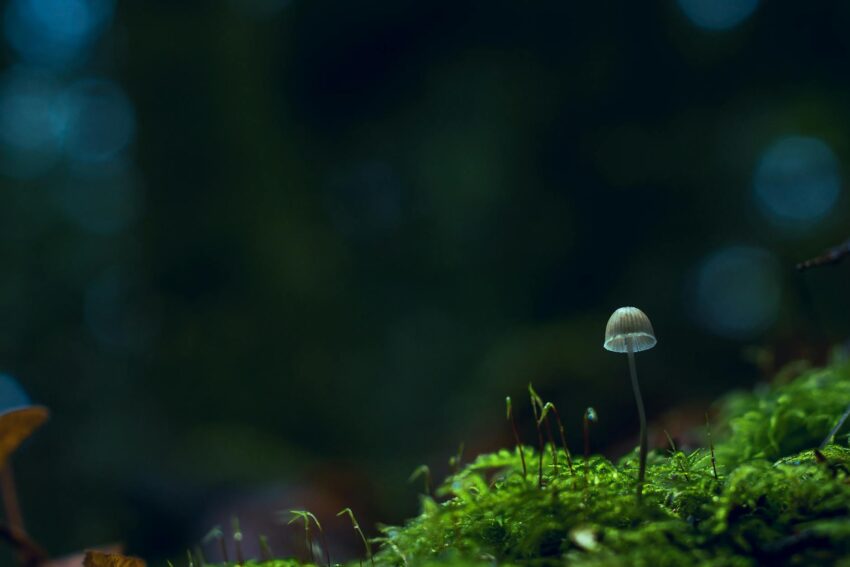Strolling through the vast spectrum of Mother Nature’s creations, one might stumble upon a handful of plants with powerful properties capable of altering human consciousness. These plants, broadly known as psychoactive plant species, have been utilized for centuries by various cultures in spiritual, medicinal, and recreational contexts. Learning to recognize and utilize these plants responsibly draws from a field known as the ethnobotany of psychedelics.
Among the various wildcrafted psychedelics, fungi such as psilocybin mushrooms have attracted considerable attention. Revered for their profound mind-altering abilities, these magical fungi are commonly sought after in the realm of psilocybin mushroom hunting. However, distinguishing the safe and psychedelic Psilocybe species from potentially harmful types requires precise skills in psychedelic plant identification.
Initiating your journey into foraging and identifying psychedelic plants, one must understand the keys to accurately identify various psychedelic flora. For instance, the leaf shape, plant height, color, texture, and habitat are typical identifiers. It’s also necessary to remember that these plants’ psychoactive properties are primarily due to alkaloids, a group of naturally occurring chemical compounds.
Psilocybin mushrooms, known also as magic mushrooms, feature prominently in the forager’s compendium. Hailing from the Psilocybe genus, they are distributed worldwide and thrive in several environments, including meadows, pastures, and forests. With around 200 species, psychedelic mushroom hunters need an eagle eye and extensive knowledge to correctly identify these wondrous fungi. Each Psilocybe species has unique features such as cap appearance, stem thickness, spore color, scent, and preferred climatic conditions. They also contain varied concentrations of the psychoactive compound psilocybin, leading to different psychedelic experiences.
Another widely sought-after psychedelic plant is Ayahuasca. This psychoactive brew is traditionally created using the Banisteriopsis caapi vine and the Psychotria viridis leaves, both native to the South American Amazon Basin. Interestingly, neither plant is psychedelic on its own. But when combined, they make a powerful brew that takes drinkers on a journey through their subconscious. When foraging, look for a woody, evergreen vine with elliptical leaves for the B. caapi, and for the P. viridis, seek out shrubs with large, ovate leaves and clusters of small, white flowers.
Moving towards other intriguing specimens of psychedelic flora, we encounter the Peyote cactus. Native to Mexico and southwestern Texas, the small, sphere-shaped Peyote cactus is reputed for its rich mescaline content, another potent psychedelic. Famed for its use in native American spiritual traditions, this cactus is recognizable by its bulbous green exterior, which sprouts pink or white flowers when mature.
Finally, the native Hawaiian Baby Woodrose is another excellent example of wildcrafted psychedelics. Although not as known as other psychedelics, these woody climbing vines carry potent psychoactive seeds, offering a robust trip to its users. When identifying, look for heart-shaped leaves, violet trumpet-shaped flowers, and furry seed pods.
Of course, the world of psychedelic plant identification is much broader, brimming with countless plant species waiting to be explored. It’s important to remember that consuming these plants comes with a specific set of risks and should not be undertaken lightly. Every responsible forager should always adhere to ethical harvesting practices, respect local laws, and consider potential health risks. The objective should always be to gain a deeper understanding of nature’s mystical offerings without exploiting or endangering the harmony of our earthly habitats.
Ensuring the sustainable practice of foraging wild psychedelics is paramount. Always remember that no trip is worth endangering your health or disrupting the balance of Mother Nature. Stay curious, responsible, and respectful on your journey through the kingdom of psychedelic flora.
Sources:
Psilocybin mushroom hunting
Psilocybe species
Ayahuasca plant identification
Hawaiian Baby Woodrose identification
Ethnobotany of psychedelics
